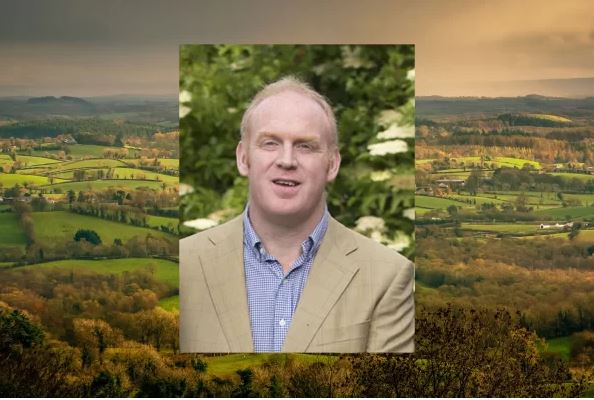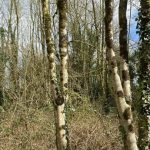
GROWING THE FORESTRY SECTOR
While there is a generally positive response here to the new Afforestation Scheme and new Forestry Programme for Ireland, most people believe that, if afforestation is to regain momentum, Government must eliminate remaining impediments and improve confidence in the sector. Managing director of Forest Services Ltd, Paddy Bruton, shares his views with Irish Farmers Monthly
In August, the European Commission finally approved, under EU State aid rules, €308 million for an Irish programme to support much-needed investments in afforestation. It was a long time coming and while welcome, Paddy says that necessary actions must be taken without further delay. “The forestry programme sanctioned by the European Commission was supposed to be in place on January 1 this year, so opportunities to plant this year have been forfeited.
“It is being touted, correctly, as the best-funded forestry programme in Europe. However, there is a big question mark over what can be delivered in the years ahead.” And while there are benefits and incentives for farmers, Paddy emphasises that an essential missing ingredient is confidence.
Actions speak loud
“This forestry programme can deliver, but for it to deliver we need several actions. We need the Government to commit to issuing licences and scheme approvals quickly and efficiently to enable afforestation, road construction, thinning and clear-felling, and, ultimately, to enable replanting.
“The Social, Economic Environmental Association of Ireland (SEEFA) has estimated that the minimum required is 11,500 licensing approvals per year. The Department of Agriculture, Food and the Marine (DAFM) is currently issuing fewer than 4,000, and that needs to be sorted out,” Paddy says.
The second requirement, Paddy outlines, is for Minister for Agriculture, Food and the Marine, Charlie McConalogue, to immediately set out a licensing plan detailing exact timelines for autumn 2023 and the entirety of 2024.
“This is important so that people can see that if they apply for a licence, they are going to get it in a dependable timeline. That’s crucial to the success of the forestry programme and to the delivery of ambitious planting targets. The next thing needed is a reconstituted scheme for growers affected by Ash dieback disease. That is not an unreasonable request. I’m hopeful on this and I note Minister of State, Pippa Hackett’s comments at the National Ploughing Championships that there may be provision in the budget to deal with the problem. If that group of people were to be dealt with positively it could be the greatest forestry promotion possible. The minimum they need is a commencement of their forestry premiums all over again.”
Home-grown challenges
Paddy agrees that all those issues can be dealt with internally, including a single comprehensive planning process, encompassing all actions from planting to felling: “There is no reason why that could not happen. It’s not the EU’s responsibility. It is within the remit of our own policymakers and legislators. Compare forestry to organics. The same minister has responsibility for both. I look at the growth in organic farming with awe. There are people in charge within the department, with the powers and responsibility necessary to deliver on the organic programme and because of this we have seen an upsurge in people going into organic farming. That’s Irish policy being implemented successfully. We can do the same with forestry if the determination is there. Unfortunately, it looks like the minister in charge does not have the same level of interest in afforestation. That’s unfortunate, but not irreversible. There is great scope for action if the willpower is there. In organics, it is now possible to claim the organic farming scheme, the agro-forestry premium, Basic Income Support for Sustainability (BISS), all on the same acre of land. That’s a huge financial incentive.
“For farmers, the premiums on the 12 new forest types are payable for 20 years. That’s five years longer than non-farmers. That’s bringing back the differential for farmers and that’s a very important provision in the new forestry programme.”
Meeting ambitious targets
Tardiness in implementing the new forestry programme has meant a loss of several planting seasons, Paddy notes: “These are the facts. The current target set by the DAFM is 8,000 hectares (ha) per year. To meet our climate change mitigation targets, we need to be planting 18,000ha every year. If radical actions are not taken, then 8,000ha, not to mention 18,000ha, is pie-in-the-sky. That’s why we need real governmental focus. Every year the slippage in planting continues, the need to plant increased acreage annually becomes greater. That’s why I have been saying for some time that the failure in the department’s afforestation policy is, ultimately, going to impact on the rest of agriculture, because if we don’t get the levels of planting required to mitigate emissions, there will, logically, be reductions in production in other sectors and that would seem to mean reducing the livestock herd.”
Mixing and matching
Paddy notes there are significant changes in the mix of tree types supported under the new programme: “It is more environment-focussed. I’m all for the right tree in the right place for the right reasons. The incentives are now geared more towards broadleaved species, native woodlands, and native tree areas. The planting of land adjacent to watercourses under the Native Tree Scheme, should assist in improving water quality. These will be very attractive options for farmers.”
But, Paddy says, he has some concerns that the move towards these tree species ‘may have gone too far’. “We cannot forget that the rafters in every house are made from coniferous timber because it is produced at the most optimum price. If we don’t continue to incentivise the planting of Norway and Sitka Spruce, we will have less timber available for use as a building material. That will add to construction costs.
“We can grow conifers in Ireland at almost double the growth rate achievable anywhere else in Europe. That is our natural competitive advantage. We cannot allow uninformed commentary on forestry dictate our planting policy. Conifers are good for the environment. As well as being fast-growing and producing commercial timber, they absorb carbon more quickly than slower-growing deciduous species. Conifer production generates rural employment through planting, managing, harvesting and processing in our sawmills.
It is also good for biodiversity, a fact that is not commonly understood or acknowledged.”
Land availability
There is plenty of suitable tree planting land across the country, Paddy says. “Teagasc surveys show there is over one million hectares most suitable for afforestation without impacting other sectors. A farmer can make more money from planting that land, and retaining their basic payment, than continuing current farming practices.
“Under the new programme there are greater restrictions on the land that can be planted, including high-nature-value farmland, deep peatlands and bird habitats, with a much stricter application process for each piece of land. We are looking at a situation where land being proposed for afforestation may be restricted to certain tree species or disallowed from planting altogether. Our role in assisting landowners interested in planting, has become more difficult, with more intensive assessment of each site, not only for the physical characteristics, but additionally, for all the environmental factors involved in site selection and its compatibility for planting. It can be done; it just takes more time.”
Land competition
And Paddy fully appreciates, there is increasing competition for land for different uses including biomethane, solar, wind turbines and nitrates strategies: “Nitrates is a big one, where farmers look to offset stocking reductions. Increased land demand, for whatever purpose, will impact the quantity available for forestry.
“Ultimately, forestry is now extremely competitive as a land-use option for many farmers. They can retain their BISS and have an income-tax free premium. Essentially, there is much more joined-up thinking to promote forestry than was there previously.”
The Afforestation Scheme is aimed at supporting the expansion of the Irish national forest estate on both public and private land. The target of the scheme is to reach 18 per cent forest cover in Ireland by the end of 2027 – compared to 11.6 per cent today – by establishing 8,000 hectares per year of new diverse, multifunctional and climate-resilient forests. Under the scheme, the aid will take the form of direct grants, covering up to 100 per cent of the eligible costs. The scheme, which will run until December 31, 2027, will be open to companies of all sizes in the forestry sector.
Full article at Growing the forestry sector (irishfarmersmonthly.com)
For further details please contact us at
www.ForestryServices.ie www.Ashdieback.ie www.Euroforestireland.ie




